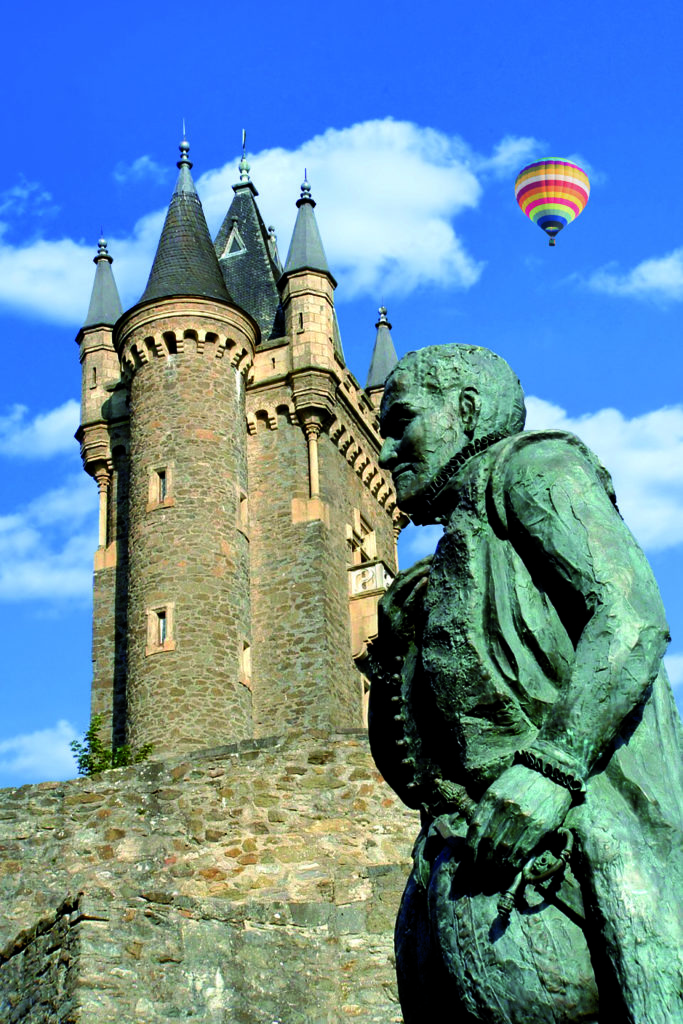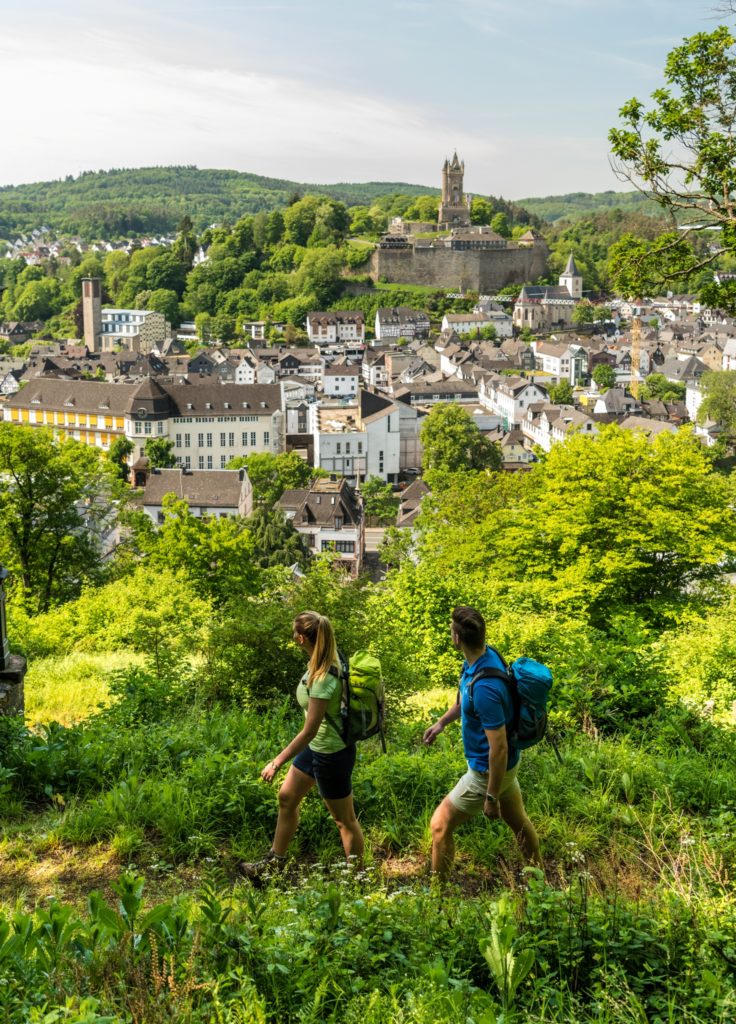Dillenburg
The picturesque town of Dillenburg with its half-timbered houses is the original home of the Dutch royal family. In the town where William I of Orange was born you can experience over 660 years of history and tradition. The town has a wide range of things to do and see: visit Schlossberg Park or wander through the winding narrow streets of the old town centre. Dillenburg is part of the Oranje Route and the German Half-Timbered Route.
Physically active and athletic guests can explore the variety of the surrounding natural area by taking any of three premium hiking trails, accredited circular hiking trails and any of the numerous cycle routes. You will be captivated by the Hessian State Stud Farm, the wildlife park, the Aquarena Sport and Family Recreation Area, the Kneipp Spa with its salt-air therapy (Gradierwerk), the mine gallery open to the public and the extensive 18-hole golf course.
For further tourist information, please go to Dillenburg’s official website (This link will bring you to a German-language website)
A visit to the castle and its outer fortifications

In the honour of William I of Orange the citizens of Dillenburg built the Wilhelmsturm between 1872 and 1875. The tower now contains the Oranien-Nassau Museum devoted to the links between the house of Nassau-Dillenburg and the Dutch royal house. On four floors, and with the intensive use of modern media, the museum presents the history of the Dutch struggle for freedom and the influence of William I of Orange. One section, absolutely unique in Hesse, on early-modern military architecture presents a virtual tour through Dillenburg Castle before it was demolished.
Because of their extent, Dillenburg’s fortifications on Castle Hill (Schlossberg) are unique in Germany. It was not until the 1960’s that the fortifications with their bastions and galleries (casemates) were partly cleared and revealed. Visitors can now gain an impression of the extent of the fortifications which in wartime were able to hold a garrison of over 2000 soldiers to defend the castle. The climax, as well as the conclusion, of a tour through Dillenburg’s “underworld” is the well in the “Lions’ Den” (Löwengrube) and the cell where Jan Rubens, father of the painter Peter Paul Rubens, was imprisoned (Rubensgefängnis).
Castle (This link will bring you to a German-language website)
Dillenburg, Home of the House of Orange

The name of Dillenburg is known to virtually everyone in the Netherlands. This is not surprising as it is the birthplace of Count William of Nassau-Dillenburg, the Dutch “Father of his Country”, William the Silent. The founder of the Dutch royal family, born in Dillenburg, began the revolt against the Spanish rule of the Netherlands. Here in Dillenburg, too, the memory of the House of Orange-Nassau is cultivated: schools, clubs, squares, streets bear names relating to the close historical connection. Beginning in 2017 the town of Dillenburg, which is part of the “Oranje Route”, has the legally-established right to call itself “Home of the House of Orange”.
You can buy internationally-known specialities of Dillenburg confectionary with the emblem of Dillenburg and the portrait of William of Orange to take home as souvenirs.
Home of the House of Orange (This link will bring you to a German-language website)
Discovering the German Half-Timbered Route (Deutsche Fachwerkstraße)

The German Half-Timbered Route runs for approximately 3500 kilometres from the Elbe in the north via Oberlausitz in the eastern part of Saxony down to Lake Constance in the south. With its eight additional stops, Dillenburg is part of the regional route “From the Westerwald via the Lahn Valley and the Taunus Hills to the River Main”. This section brings you to historical locations, capitals of one-time principalities, to important centres of trade and to spas and venues of cultural festivals. You will also see charming historic town centres with their picturesque half-timbered houses, proud palaces and castles, impressive churches, monasteries and cathedrals.
German Half-Timbered Route (This link will bring you to a German-language website)